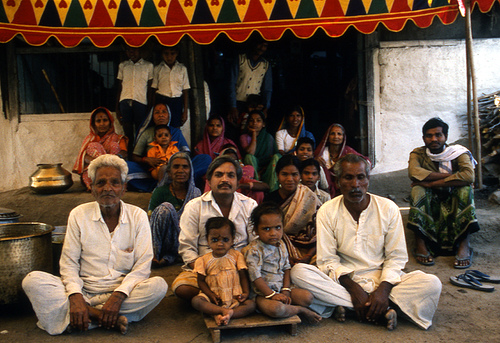Health Risks of Child Marriage
There are numerous health risks for women associated with Child marriage. In India , for example, researchers have found  increased rates of Sterilization, poorer child health, Miscarriage and higher levels of Abortion.
increased rates of Sterilization, poorer child health, Miscarriage and higher levels of Abortion.
The Study
The Boston University School of Public Health (BUSPH) researchers, led by Dr. Anita Raj, focused on India for their study, a country which in 1978 raised the legal age for marriage to 18. However, the researchers found that in the past ten years, there has only been a 5% reduction in child marriage. The study found that 44.5 % of women ages 22 to 24 were married before age 18, 22.6% were married before age 16, while 2.6 % were married before age 13. The authors argued:
“The prevalence of child marriage remains unacceptably high. These results suggest that neither recent progress in economic and women’s development, nor existing policy or programmatic efforts to prevent child marriage and promote maternal and child health, have been sufficient to reduce the prevalence of child marriage in India to that of most other developing nations.”
Child Marriage and Poorer Fertility
The study found a correlation between child marriages and poor fertility outcomes.
Women who married younger than 18 were significantly more likely to report no contraceptive use before their first childbirth than were those who married as adults. 48.4% of women who were married as children reported giving birth before they turned 18. Women married as children also were more likely to have had repeat childbirths in less than 24 months and to have had three or more childbirths, than those married as adults.
Child marriage is associated with an increased prevalence of unwanted pregnancies and an increased prevalence of pregnancy termination, defined as miscarriage, abortion or stillbirth. The study found that 19.5% of women married as children were sterilized as opposed to 4.6% of women married as adults. More than three-quarters of respondents reported using no contraception at all.
There appears to be a direct link between contraception use and sterilization. According to the study:
“Increased prevalence of sterilization in young women married as children could be attributable to these women having their desired number of children at an earlier age, as indicated by their high fertility. However, our findings suggest that sterilization might also be the consequence of inadequate fertility control, which is evident from the increased risk of unwanted pregnancies in women married as children.”
Recommendations
The authors recommended that campaigns encouraging women to use contraception (rather than opt for sterilization) be enacted, especially in rural and remote areas of India. Campaigns should not only target women but also husbands and in-laws who may have “more control of family planning”.
References
See also
- Child marriage
- Early Marriage in Bangladesh


